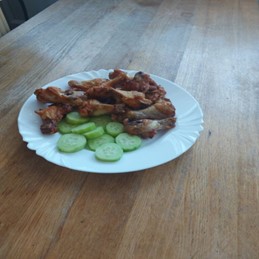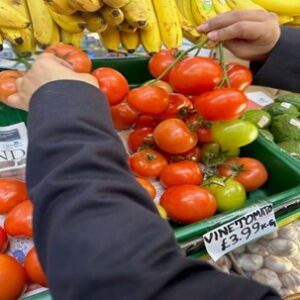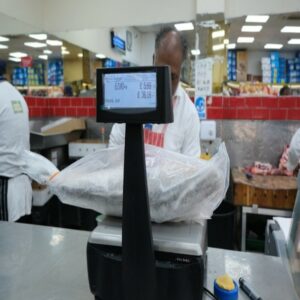FOOD DIARIES – LEARNING HOW THE FOOD SYSTEM AND
POLICY SHAPES WHAT AND HOW WE EAT
Our researchers are currently using two research methods – food shopalongs and food diaries. Here we explore how the food diaries research works.
By Julia Kidd, Research Administrator at the University of Sussex, and Shazna Hussain and Sajna Miah, Community Researchers with Wen in Tower Hamlets.
FOOD DIARIES
What do local people think about what they eat and cook?
Our food diaries record how our research participants, mostly women, from the London Borough of Tower Hamlets make decisions about what to prepare, cook, and eat; the range of influences on those decisions; and the skills women in particular have in feeding their families.
Our research approach is participatory, meaning our participants have more control over what they tell us.
Through this research we aim to understand how the food system and policy landscape shapes what and how we eat. Once we have a better understanding, we have the potential to transform these systems to improve our food lives.
How the Food Diaries research works
We asked volunteers to take a photograph of everything they ate and drank, where they ate or bought it from, and who they were with, over a 1-3 day period. We asked questions such as: what are you eating? where are you? And who are you with?
Here’s some of the photographs of food shared by our food diary participants:

Snack

Street party cake

Breakfast crunchy nut clusters

Chicken wings with cucumber

Hosting a meal

Rice, daal, potato borta, broccoli borta & tomato chutney, jojobi chutney, zara lembu & green chilli

Side salad

Eating out
Some of the key things we’ve learned:
- How varied people’s shopping, cooking and eating is – even in the same Bangladeshi community on the same estate, and even in the same family
- Health is understood in different ways even by the same person
- Cost is one of the main factors in decision making
- Importance of the sharing of culture in the meals provided, ensuring that children and families eat their ethnic, racial and faith related foods/meals
- Evidence of food experimentation across different cuisines
- Interest in challenging the use of plastic and food waste
- The need to consider children when budgeting, planning, preparing and shopping for food. Some women cook several meals or adapt dishes because of children’s preferences, allergies etc.
- A wide variety of foods are eaten from home grown, through to market bought,
shop bought, prepared food - Families do eat take-aways out of convenience or as a treat
- Evidence that the women knowledgeably ‘make do’ and have skilful expertise over ingredients, time, kitchens, preferences
- Shopping and cooking are time consuming and labour intensive
FOOD SHOPALONGS – LEARNING WHAT INFLUENCES FOOD
BUYING CHOICES
FOOD SHOPALONGS
What are local people’s food shopping habits?
We asked volunteers to take a researcher from the University of Sussex food shopping with them and talk about their shopping as they went. The researcher made notes, and (with consent) sometimes recorded and took photos of them and what they bought.
We were able to learn what volunteers buy to eat, where they buy it from, and what influences their food buying choices.
In this way, we discovered the complex demands and skills involved in this seemingly ordinary but complex and labour-intensive process, often affecting women more directly and intensely than men.
How the food shopalong works
Our researchers accompanied women going food shopping.
Location: Wherever they usually do their shopping – the market, the supermarket, a small local shop or the food bank.
Typical duration: 30 minutes – 2 hours

Choosing tomatoes for a salad – vine tomatoes taste better

Visiting the vegetable stalls at Watney Market

Uri (Bangladeshi bean) – checking for freshness

Silver pomfret package

Weighing a mirgal fish
Some of the key things we’ve learned:
- People shop frequently and in different ways – it’s quite complex because balancing different priorities: what have I got in my cupboard/fridge; people’s likes/dislikes; allergies and logistics of carrying; complexity & skills (cognitive)
- The residents we spoke to mentioned that they: Go to the supermarket for fruit and vegetables because it stays fresh for longer and they go to the market for cultural vegetables
- Participants would like healthier oils and access to cheaper organic fruit and vegetables. Participants are price comparing cooking oils – olive oil, mustard oil, sunflower oil, vegetable oil – and will purchase oil from different shops and sometimes this may be a little further away than their usual place of shopping. This adds extra time and effort to their shopping process.
- Cost-of-Living Crisis: some participants are having to buy cheaper supermarket brands and must make decisions to leave some products for a later date.
- Often, participants will go shopping just after dropping the children off at school. This allows them time to cook earlier and have the evening free to do other things.

Bagging up some coriander for curries, garnish and salad

Selecting chicken breasts from the halal range in Iceland


